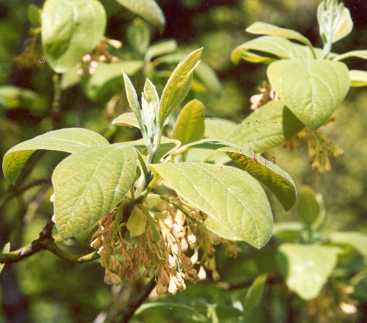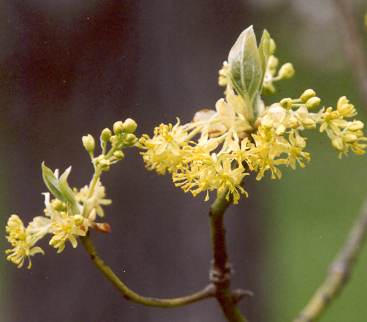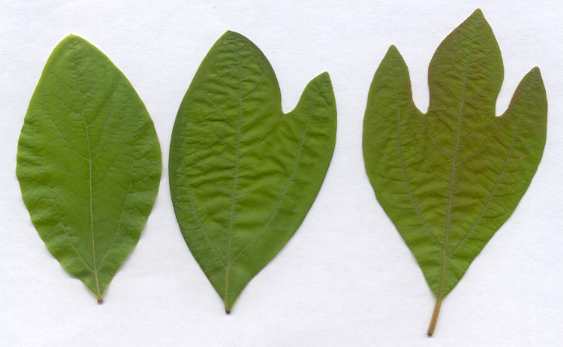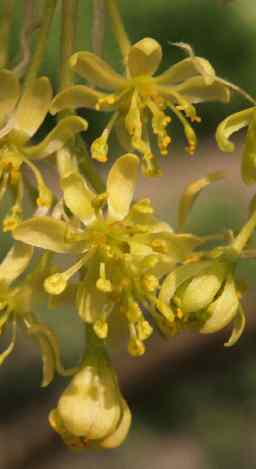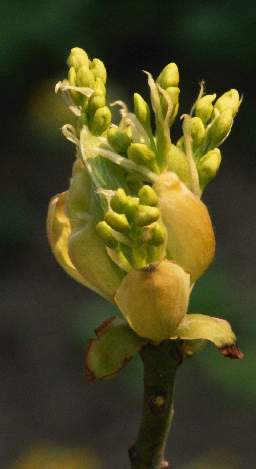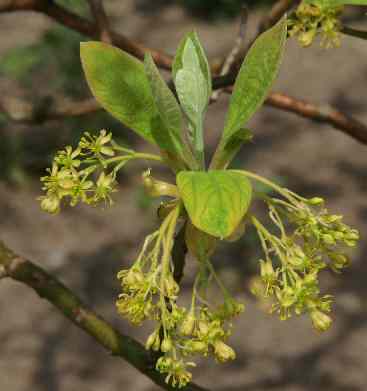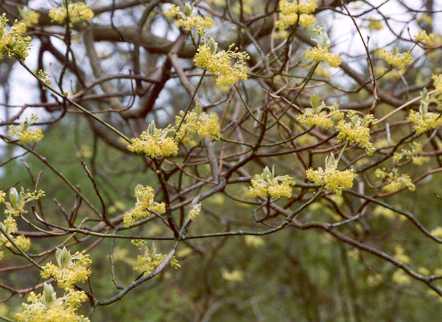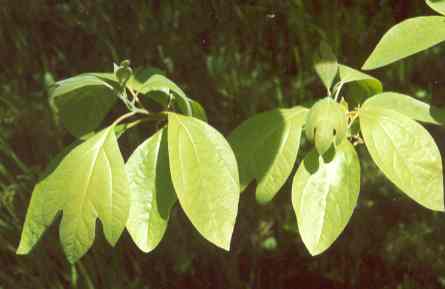| ||
|
In the Creole cuisine of New Orleans, Louisiana, we find a unique blend of Spanish, French, African and Indian (Native American) heritage. European, mostly French, dishes were modified, enriched with local resources and made more spicy. For example, the Spanish rice dish paella (see saffron) might be the forerunner of the famous jambalaya. Hot pepper sauces (properly, hot chile sauces) in the style of Tabasco sauce have their origin in Louisiana.
What is called gumbo is a tasty soup made from sea food, craw fish or even chicken, which owes its thickness to plenty of okras, an African vegetable. The soup is seasoned with thyme, celery and paprika; immediately before serving, some sassafras powder is stirred in. Gumbo is always eaten with plain rice.
A second cooking tradition of Louisiana is that of the Cajuns, French-speaking immigrants from Canada. Strong flavours of smoked meat (e. g., the well-known pork sausage, andouille), of black pepper, paprika and onions, are typical for the rural, country-type cooking of the Cajuns. Many dishes are stews with long cooking time, yielding a perfect blend of flavours.
Despite several differences, the Creole and the Cajun cooking styles have many
features in common: Both of them prefer spicy, pungent flavours; both use roux (flour browned in hot butter) excessively; and both make heavy
use of venison and sea food. Among the most important spices are, besides
sassafras, celery, thyme (see there about the blackening
procedure) and paprika varieties of varying
hotness.
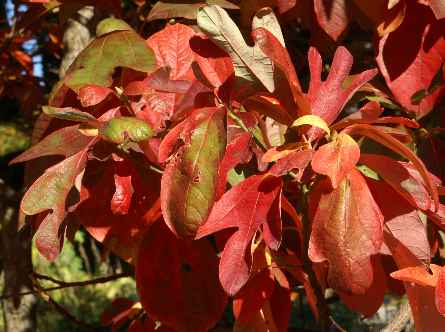
|
| Sassaras autumn-coloured leaves |
In most countries outside the United States, sassafras is looked upon with suspicion because of its high content of safrole, an hepatotoxic and probably carcinogenic agent. In Europe, sassafras leaves are not available; lemon balm provides a good substitute, but since the latter is more aromatic, dosage must be reduced.
The essential oil of sassafras
(obtained from the root) is, after removal of safrole, used for flavouring
a concoction called root beer in the USA, which is a truly US-American
beverage dating from the 19.th century. The original recipe was a lightly
fermented mixture of water, sugar (or molasses) and plant extracts, but today’s
root beer is completely free of alcohol, being made from sugar, aromatic plants
and carbonated water alone. Thus, root beer is not a beer at all, but an
ordinary soft drink (see gale on the topic of
brewing).
